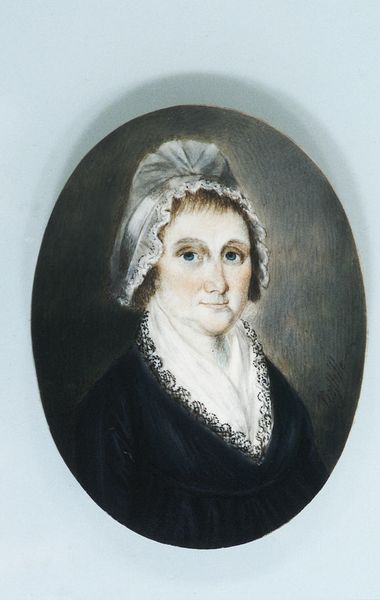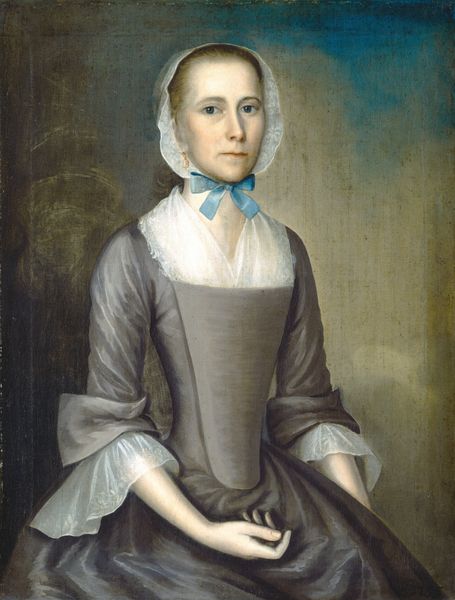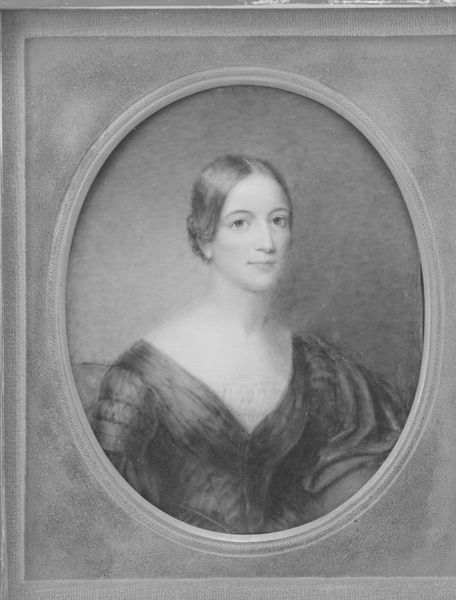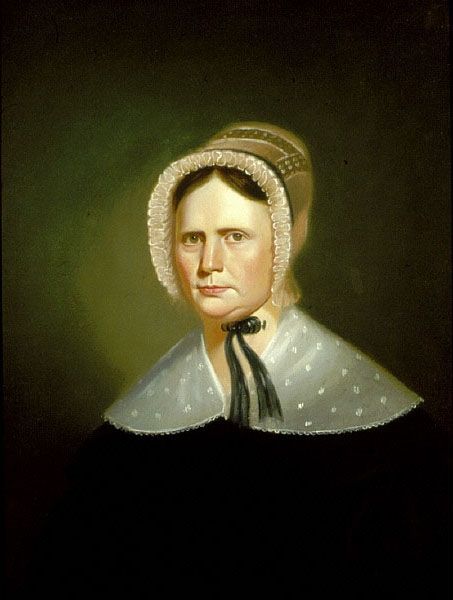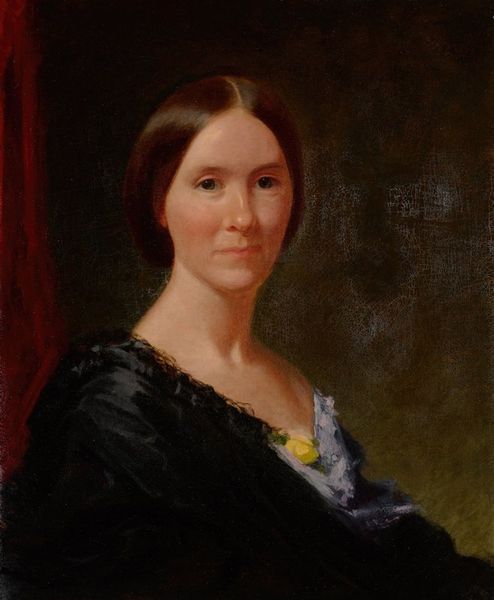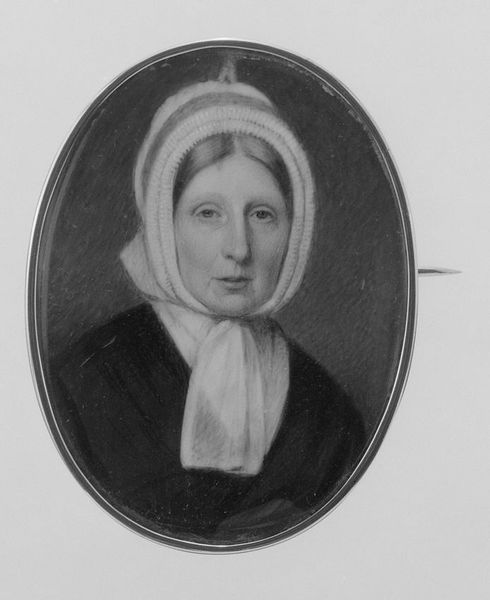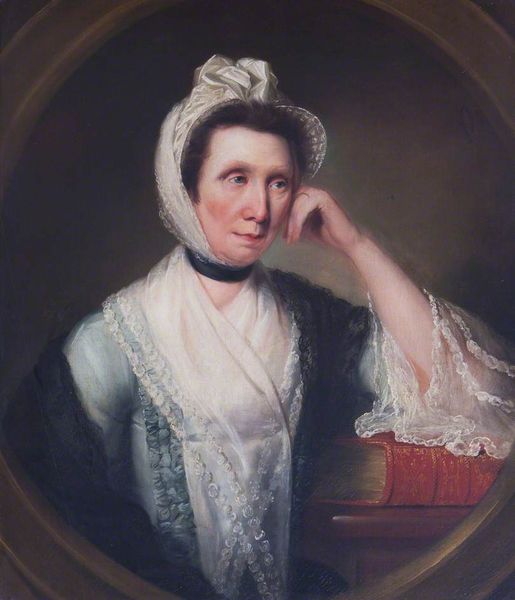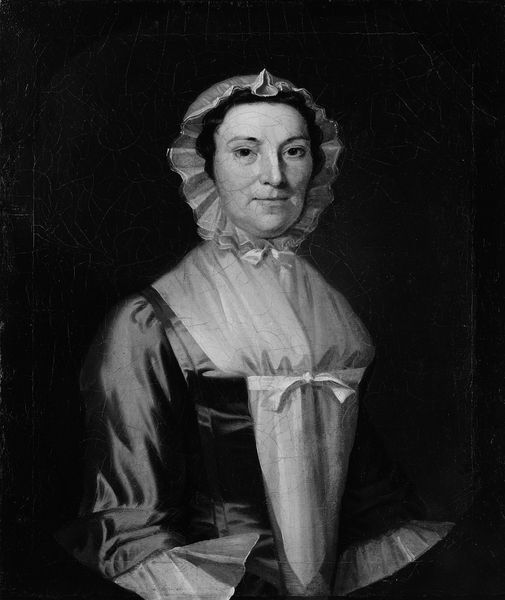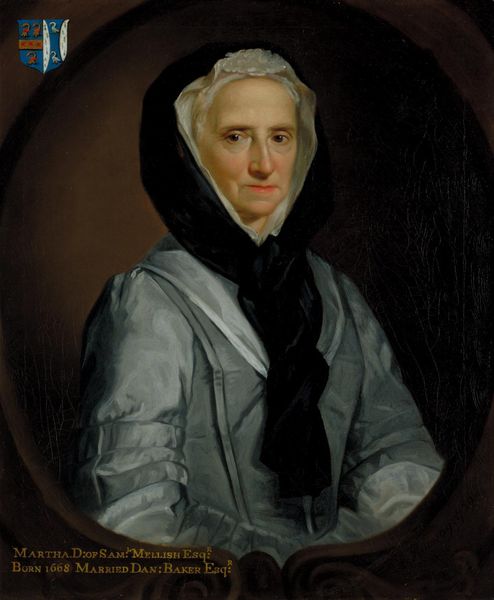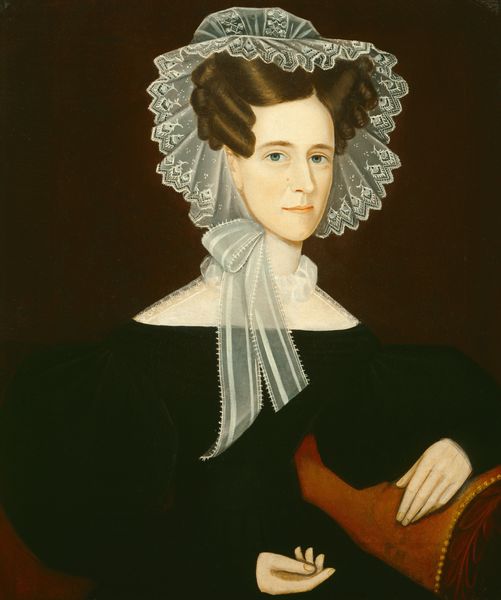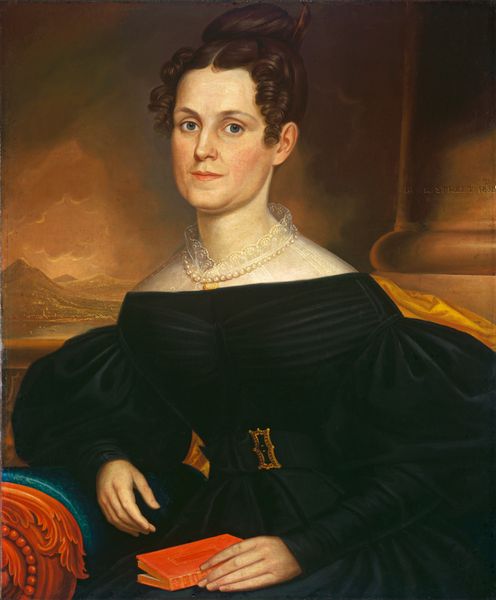
#
portrait image
#
portrait reference
#
portrait head and shoulder
#
animal portrait
#
animal drawing portrait
#
portrait drawing
#
facial portrait
#
lady
#
portrait art
#
fine art portrait
#
digital portrait
Copyright: Public domain
Curator: Thomas Sully painted this portrait, "Mrs. Evan Poultney," in 1857. The simple presentation gives it a timeless quality, don't you think? Editor: Yes, but initially I find the work…oppressive. Her stark, almost severe, clothing coupled with the close framing feels very constrained, reflective of a societal restriction, perhaps. Curator: That is quite possible, and while the artist’s intent isn't explicitly known, the application of pigment itself shows areas of thick impasto creating visible textures. I'm particularly drawn to how he renders the bonnet, creating its form with thin washes of whites and grays. Editor: Speaking of the bonnet, it highlights the expected decorum of women during this era, signaling religious affiliation and the expectations surrounding a wife and mother's public image, a constant, careful performance. And I'm interested in how this portrayal contributes to gender dynamics of the time. Curator: I can see that; it’s certainly intriguing to think about. However, you cannot ignore that, while there is evidence of visible brushwork, overall the rendering is quite precise, even refined, suggesting careful, painstaking application for each layer. The visible weave of the canvas, especially noticeable in the background, shows a purposeful working method. Editor: Methodical to conform to ideals. Portraits often served as vehicles to communicate respectability but also wealth, class, race and belonging, creating an uneven, historical playing field for who was and was not included. How can we use a study of Sully's painting to highlight these exclusions and begin necessary dialogue around social responsibility in portraiture? Curator: By focusing on Sully’s process – how he used different techniques to arrive at an almost ideal rendering of his subject – we are acknowledging his artistic process, as well as, recognizing those inequalities and opening that discourse. It encourages thoughtful evaluation and, perhaps, challenges us to look at art and history critically and, maybe even begin to re-evaluate what portraiture can and should mean. Editor: Agreed. The act of engaging with this image is an act of active revision. By making sure these types of artworks exist in spaces such as this and others. We’re promoting crucial reflection and discourse.
Comments
No comments
Be the first to comment and join the conversation on the ultimate creative platform.
